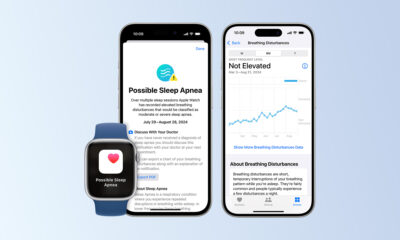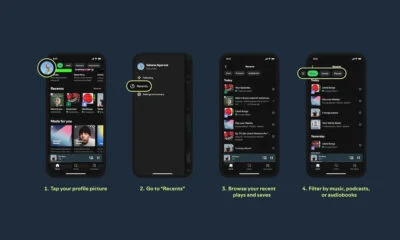News
Mimecast Releases Its CyberGraph AI Email Security Tool
If a malicious email message is detected, CyberGraph will display a color-coded contextual warning banner to warn the user and encourage them to take the right action.

Since the outbreak of the COVID-19 pandemic forced many businesses around the Middle East to close their offices and abruptly transition to remote working, email phishing attacks have increased both in number and sophistication. This concerning new trend has put the topic of email security as a top priority for many businesses in the region.
According to Mimecast, a provider of cloud cybersecurity services for email, employees now click on three times as many malicious emails as they did before the term “social distancing” entered our collective lexicon.
Determined to better protect its customers against this growing threat, Mimecast has just launched a new artificial intelligence (AI)-enabled tool for email security, called CyberGraph. The tool promises to keep email phishing attacks at bay using machine learning algorithms capable of detecting anomalous behaviors that could be indicative of a malicious email.
“CyberGraph leverages our AI and machine learning technologies to help keep employees one step ahead with real-time warnings, directly at the point of risk,” explains Josh Douglas, threat intelligence lead at Mimecast. “Phishing and impersonation attacks are getting more sophisticated, personalized, and harder to stop. If not prevented, these attacks can have devastating results for an enterprise organization. Security controls need to be constantly updated and improved to outsmart threat actors,” he added.
Whenever CyberGraph determines an email message to be malicious, it displays a color-coded contextual warning banner to warn the user and encourage them to take the right action, such as mark the email as spam.
Also Read: Is Your Phone Hacked? How To Find Out & Protect Yourself
In addition to its ability to distinguish malicious email messages from legitimate ones, CyberGraph can also disarm trackers embedded in emails to keep unauthorized third parties from getting their hands on information that could be used to orchestrate highly targeted phishing attacks.
Like other cybersecurity solutions powered by machine learning algorithms, CyberGraph’s effectiveness will keep improving over time as more users adopt it to protect their inboxes.
News
Samsung Smart Glasses Teased For January, Software Reveal Imminent
According to Korean sources, the new wearable will launch alongside the Galaxy S25, with the accompanying software platform unveiled this December.

Samsung appears poised to introduce its highly anticipated smart glasses in January 2025, alongside the launch of the Galaxy S25. According to sources in Korea, the company will first reveal the accompanying software platform later this month.
As per a report from Yonhap News, Samsung’s unveiling strategy for the smart glasses echoes its approach with the Galaxy Ring earlier this year. The January showcase won’t constitute a full product launch but will likely feature teaser visuals at the Galaxy S25 event. A more detailed rollout could follow in subsequent months.
Just in: Samsung is set to unveil a prototype of its augmented reality (AR) glasses, currently in development, during the Galaxy S25 Unpacked event early next year, likely in the form of videos or images.
Additionally, prior to revealing the prototype, Samsung plans to introduce…
— Jukanlosreve (@Jukanlosreve) December 3, 2024
The Galaxy Ring, for example, debuted in January via a short presentation during Samsung’s Unpacked event. The full product unveiling came later at MWC in February, and the final release followed in July. Samsung seems to be adopting a similar phased approach with its smart glasses, which are expected to hit the market in the third quarter of 2025.
A Collaborative Software Effort
Samsung’s partnership with Google has played a key role in developing the smart glasses’ software. This collaboration was first announced in February 2023, with the device set to run on an Android-based platform. In July, the companies reiterated their plans to deliver an extended reality (XR) platform by the end of the year. The software specifics for the XR device are expected to be unveiled before the end of December.
Reports suggest that the smart glasses will resemble Ray-Ban Meta smart glasses in functionality. They won’t include a display but will weigh approximately 50 grams, emphasizing a lightweight, user-friendly design.
Feature Set And Compatibility
The glasses are rumored to integrate Google’s Gemini technology, alongside features like gesture recognition and potential payment capabilities. Samsung aims to create a seamless user experience by integrating the glasses with its broader Galaxy ecosystem, starting with the Galaxy S25, slated for release on January 22.


























